Brass Edging and Binding
The use of brass to edge the perimeter of a box seems to date back to around the start of George IV’s reign in 1820. As well as to protect, strengthen and conceal the joints, the brass was also considered as an additional decoration to the box’s exterior. The most commonly used forms of brass edging were right angle brass, radial brass, quadrant brass or brass corner strapping. As Victorian tastes and fashions changed, many of the finest boxes were edged with the more profiled quadrant brass.
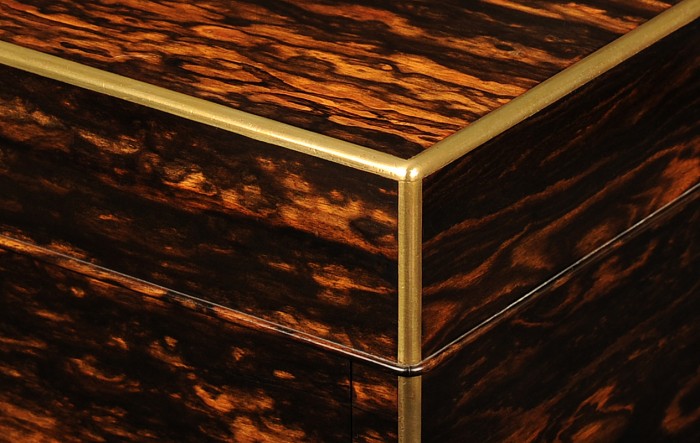
Quadrant brass edging on an antique dressing case in coromandel by Betjemann & Sons.
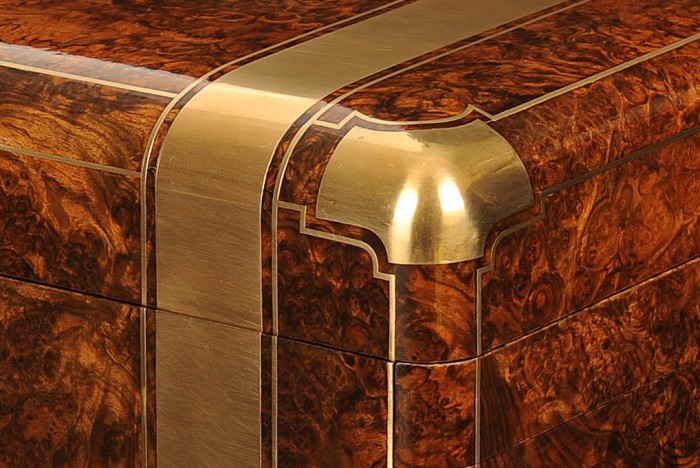
Brass binding and corner mount from an antique jewellery box in burr walnut with cantilever mechanism.
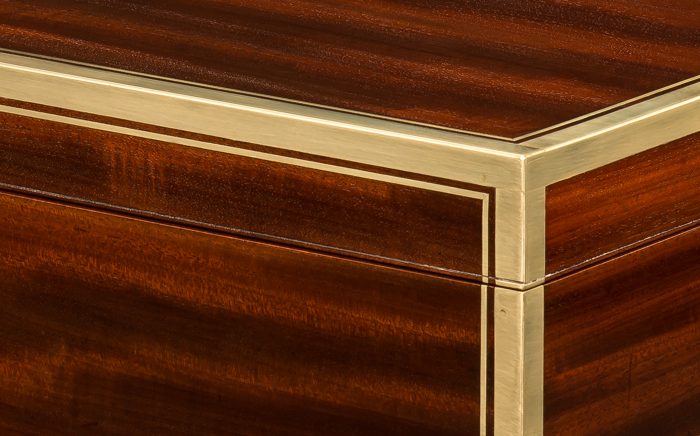
Right-angle brass edging on an antique officer’s box in Cuban mahogany, by David Edwards.
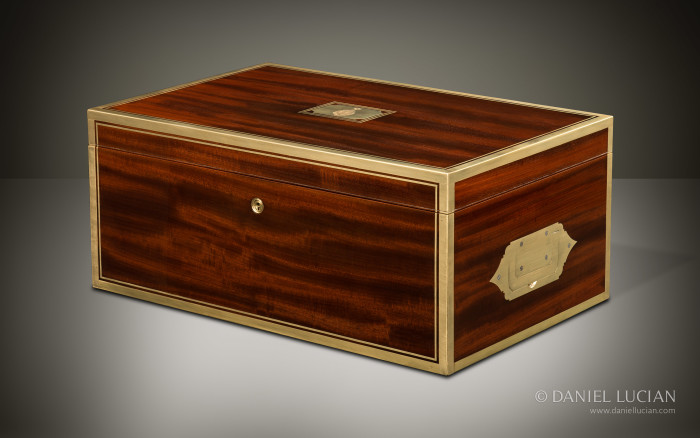
Antique Officer’s Box in Cuban Mahogany, by David Edwards.
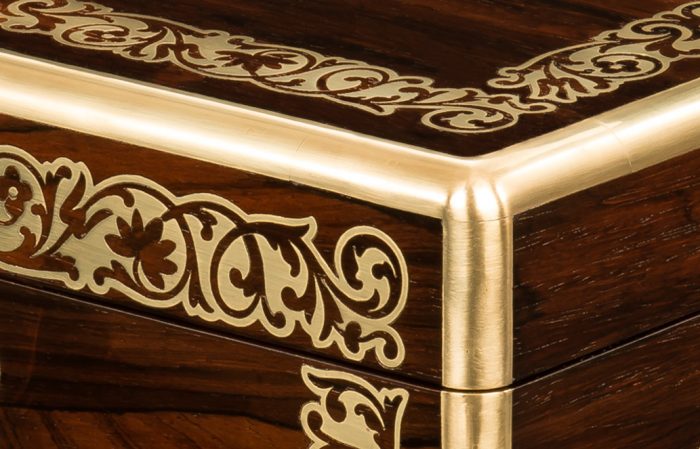
Radial brass edging on an antique jewellery box in rosewood with foliate brass inlay, by Austin of Dublin.
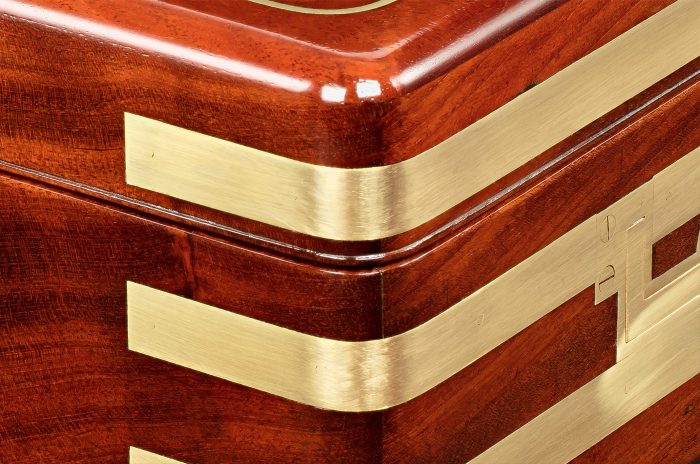
Brass strapped binding on an antique jewellery box in solid mahogany, by Asprey.
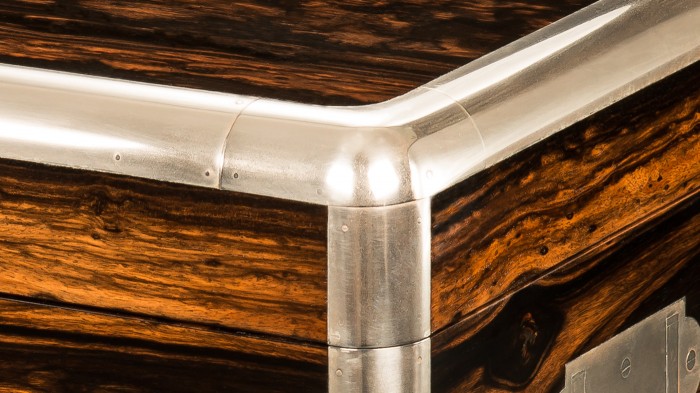
Nickel plated brass radial edging on an antique jewellery box in coromandel, retailed by Ernest Renton.
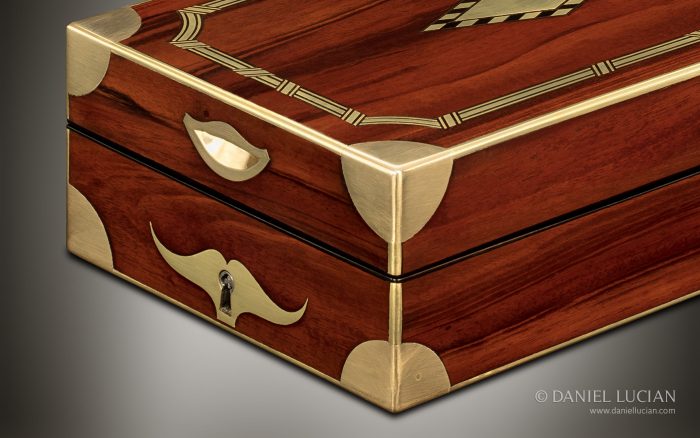
Crescent shaped brass corner mounts from a French antique jewellery box in palisander wood.
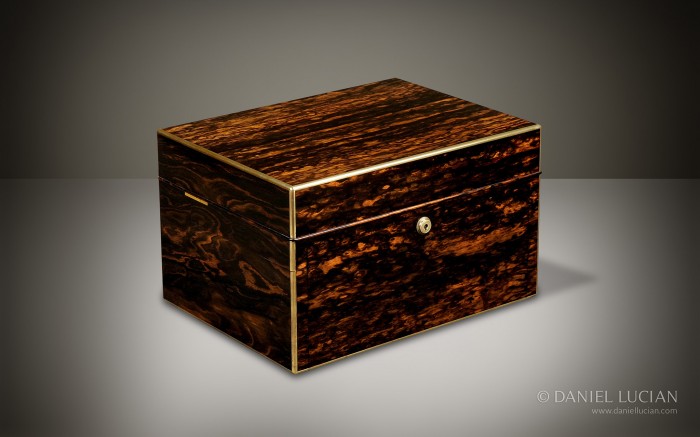
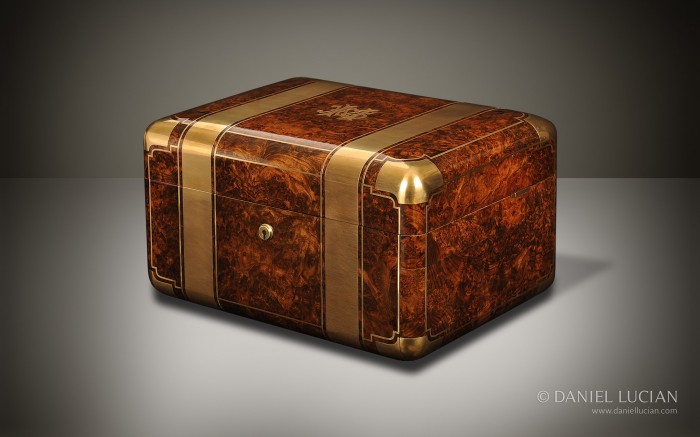
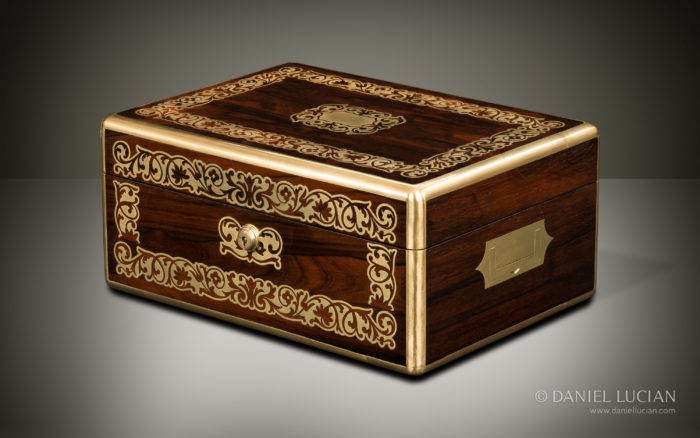
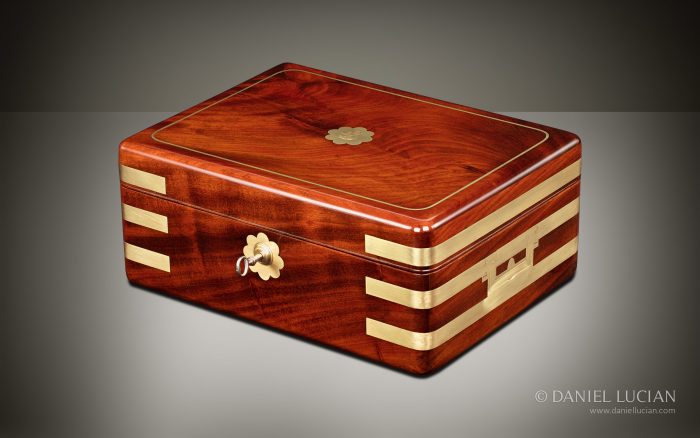
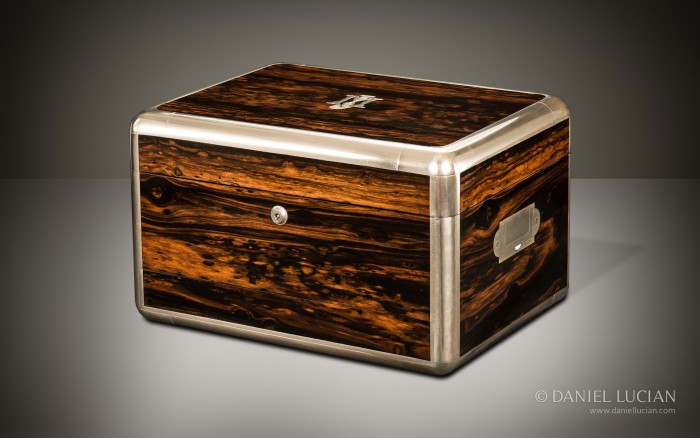

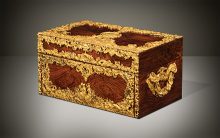 Price On Application
Price On Application